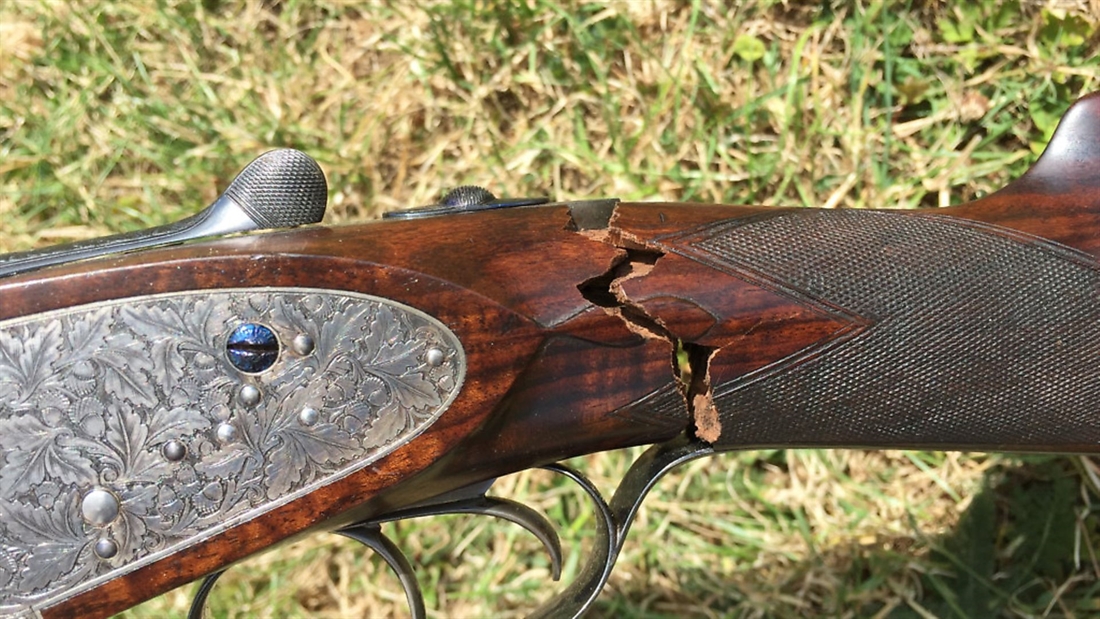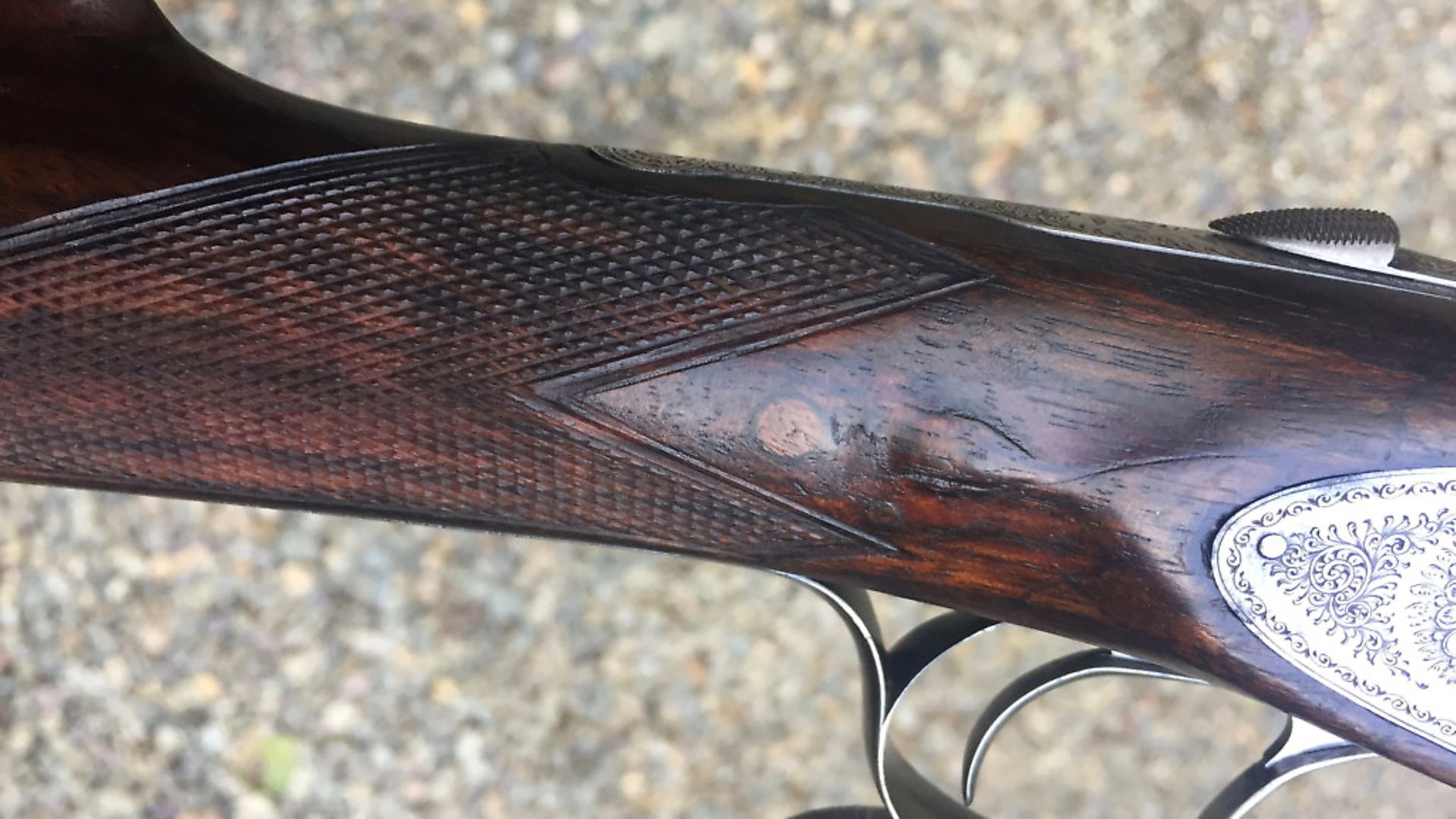Broken Stock! What are my options?

What options do you have if your gun suffers a catastrophic stock break? Diggory Hadoke takes us through the possible solutions
Gun stocks are weaker than you might think. Actually, it is fairer to say they are vulnerable when subjected to stresses they were not designed to withstand. There are plenty of examples of stocks made a century and a half ago in regular use that still do their job with confidence and ease. If reasonably well cared for, a properly made sporting gun stock will remain in place and intact through hundreds of thousands of fired shots and decades of carriage in the field.
What these stocks do not respond well to is being dropped or sat upon. Any sharp blow in a lateral direction, or leverage of a similar kind, will snap the stock at the wrist, typically around the area where the hand-pin hole is drilled.
I have had guns brought in for restocking that have been put on the back seat of a Range Rover and sat on, or leaned back on while in a slip, only for the owner to unslip it for the next drive and find it in two pieces. More than an inconvenience, this represents a huge financial outlay, often one that will cost more than the market value of the gun.
Such problems are not new. Gunmakers and their customers have wrestled with the problem of stock breakage since the earliest days of the sporting gun. It is bad enough if you break your game gun on a pheasant shoot in Surrey, imagine how much worse if you were an explorer or hunter in Africa in the mid 1800s, your most vital piece of equipment ruined and your life perhaps dependent on it. You certainly would have no opportunity to have a competent gunsmith deal with the problem for you.
Unsurprisingly, gunmakers came up with a number of novel solutions or, at least, designs intended to render breakage less likely or debilitating. Some built in a longer top strap, extending over the comb, to produce greater stability; this was sometimes mirrored by extending the guard strap in a similar manner. Another, less common, feature was to extend the lock plates, which then become slim braces, right down the hand of the pistol grip and ending in a metal grip cap. These were sometimes chequered on the metal to match the chequer on the wood.
NOVEL HISTORICAL REPAIR TECHNIQUES
Once smashed, history shows that repairs could be, and were, made using some novel approaches and locally available materials. Brass plates screwed onto and around the grip are common and, in Africa, it was not unusual to see wet buffalo-gut straps wrapped around a cracked stock, shrinking tight as they dried and holding the wood together. It is a surprisingly reliable repair.
Returning to the immediate problem of today’s sportsman with a broken stock, he is faced with a dilemma. A restock job on a boxlock will cost at least £3,500 and a side-lock probably £5,000. It is very unlikely that most of the guns that suffer the damage today will be worth restocking, unless sentimental value wins the day. If it is a family gun, then the cost is academic (as long as you have the money).
I was faced with two such problems recently. One, a William Powell 16-bore I was given by an aged local chap, who had smashed the stock when he was a youth while ferreting. He learned the hard way that a gun stock is not the most effective club for despatching wounded bunnies.
The other (a Gibbs side-lock), embarrassingly, belonged to a client and, while entrusted to Parcelforce and packed in a hard plastic gun transport case, arrived at its destination in two pieces, clean broken through the hand. In both cases, the value of the gun was about half of the cost of restocking.
THE GLUE AND SCREW TECHNIQUE
So, in extremis, we resorted to the ‘glue and screw’ technique. Modern glues are very strong and they will do a good job as long as you can get them to adhere well to the wood either side of either crack.
However, the hand of the stock is subject to a lot of flexing and stresses, so we often take extra steps. One method is to cut out a rectangle along the guard strap and trigger strap, then cut a new piece of wood to fit tightly into it. This is first glued into place, then the trigger plate, top strap and guard strap are screwed to the new wood, binding new and old together mechanically as well as adhesively.
This is not always necessary – sometimes screws or metal rods can be put in from under the guard strap, facing diagonally, pulling the two pieces together and holding firm when the gun flexes under firing. With clever blending in, colouring and finishing, the exposed wood can be made to look undamaged and a little rechequering at the hand will disguise any obvious flaws there.
This is a bonus if it is your gun and you are trying to get it to look as good as possible and work as well as it can. However, if you are buying a used gun, you need eagle eyes to spot the best work of a skilled repairer. Many a punter at the auction has bought a gun with a cleverly repaired but catastrophically smashed stock and I have seen a good number on the shelves of one or two dealers in my time, undeclared and awaiting a bargain hunter.
The Powell 16-bore is now in my personal rack and has seen one season through with some heavy shooting, including a simulated driven day in which it fired over 300 shells in rapid succession. The Gibbs is being repaired at this very moment. I’m hopeful that it will prove serviceable for years to come.
So, if you have a nice old gun with a broken stock lurking in the gun safe, there is a solution; which is good news. If, however, you are in the market, pay close attention and make sure you don’t fall foul of someone’s clever handiwork.






